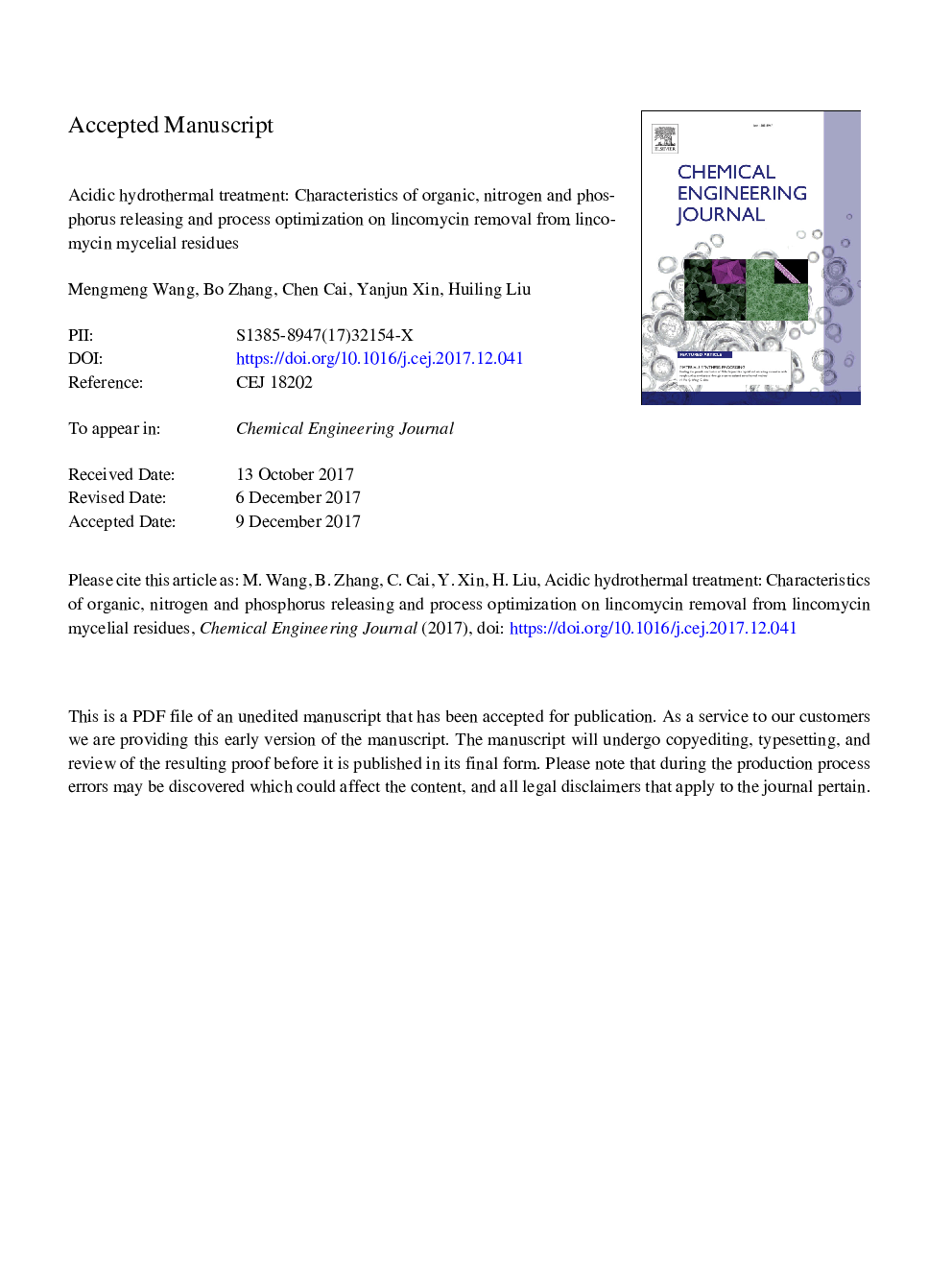| Article ID | Journal | Published Year | Pages | File Type |
|---|---|---|---|---|
| 6580634 | Chemical Engineering Journal | 2018 | 40 Pages |
Abstract
Lincomycin mycelial residues (LMRs), one kind of bio-wastes with a high biomass organic content, are limited to use due to residual lincomycin. Recycling of LMRs is not only benefit to economy but also to environment. This study developed an acidic hydrothermal method for LMRs treatment. Effects of reaction temperature (100, 130 and 160â¯Â°C), residence time (60, 120 and 180â¯min), and H2SO4 concentration (0.2, 0.4 and 0.6â¯M) on the amount and distributions of organics, nitrogen and phosphorus were investigated. In addition, these three crucial parameters for maximum removal of lincomycin were optimized using response surface methodology (RSM). Meanwhile, intermediates of lincomycin treated by acidic hydrothermal treatment (AHT) were identified by liquid chromatography - mass spectrometry (LC/MS). Antibacterial assessments of them were conducted via disk diffusion tests. Results showed that the treatments led to 34.7%-251% and 30.9%-214% in the concentrations of TN and TP, respectively, and 1.44-3.89 times higher of SCOD in the soluble phase of LMRs. Lincomycin removal rates increased with the increasing of reaction temperature, residence time and H2SO4 concentration in a certain range. The optimal conditions were obtained at activation temperature of 160â¯Â°C, residence time of 157.2â¯min and a H2SO4 concentration of 0.53â¯M, where 98.3% of lincomycin was removed. Moreover, inhibition of lincomycin after AHT on Staphyococcus aureus, with respect to untreated solutions containing this compound reduced significantly. Therefore, recycling of LMRs is promising after removal residual lincomycin via AHT.
Keywords
Related Topics
Physical Sciences and Engineering
Chemical Engineering
Chemical Engineering (General)
Authors
Mengmeng Wang, Bo Zhang, Chen Cai, Yanjun Xin, Huiling Liu,
